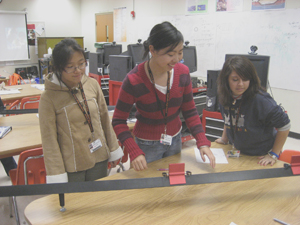E-Field
- State and explain the mathematical definition of E-field.
E = F/Q
E = the electrostatic force per unit of charge
E is a vector
The direction of E is shown for a positive charge
- Describe how rays (field lines) can be used to represent force fields.
the direction of the rays represent the direction of the field
the spacing of the rays can be used for representing the magnitude of the field. close spacing = high field strength.
the direction and magnitude of the field is directly related to the magnitude and direction of the forces created on an object by the field.
- Compare E-field to g-field using ray sketches.
charge or mass at a point
charge or mass uniformly distributed in an infinite plane (flat Earth model)
-
Compare E-field to g-field using the equations for E-field and g-field created by a point source.
-
Compare E-field to g-field using sketches of field strength from a point source vs. distance.
Relevance: A broadcast signal electronically fed into an antennae will cause electrons to move back and forth in the antennae, creating a moving E-field in the process. This in turn creates a force on electrons in an antennae at a distance, causing them to move up and down in a similar fashion. Electronic equipment attached to the distant antennae can then detect play the broadcast. This is the basis of all TV, radio, wifi, and other wireless systems.
Homefun (formative/summative assessment) . problems 67, 68, 69 page 585
|
 SC Standards
:
SC Standards
: